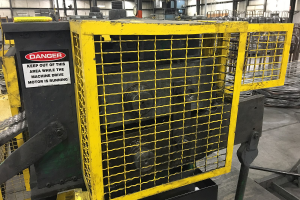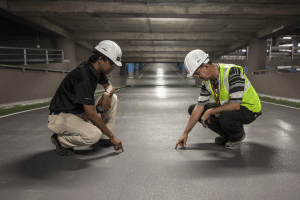Important LOTO Ruling for Die Changes
A decision by the Occupational Safety Health and Review Commission offers importance guidance to all industries, particularly stamping, about when OSHA’s lockout/tagout regulations should be applied and when not.
The 2016 ruling involved an automotive supplier, Matsu Ohio, that did not deploy lockout/tagout around its 10 partial revolution mechanical power presses. An OSHA inspector issued a serious citation, and a less-than-serious citation to the company for failure to follow lockout/tagout procedures.
But the Review Commission overturned the citations, noting that the “preponderance of evidence established that cited activities didn’t expose any employees to possible injury from any unexpected energization or startup of press or release of stored energy.”
The Matsu Ohio presses featured engineered controls, which included, in part, control reliability, brake monitoring, light screens and E stops, a protected motor start button, and a type of drive motor starter that will disconnect the drive motor from the power source in the event of control voltage or power source failure. Relevant parts of the ruling noted:
“During die-setting and other set-up operations … the e-stop is engaged and locked out, and employees unavoidably penetrate the press’s two light curtains.
“When the e-stop is engaged and locked, the press cannot cycle and the ram cannot move or drift. The Niagara Transfer press has dual redundancy e-stops that prevent the ram from moving when no energy is going to the clutch, and which makes it impossible for energy to transfer from the flywheel to the gear mechanisms.
“… So, if a safety relay failed with either the e-stop locked or a light curtain having been broken, the press could not engage.
“When a light curtain is penetrated, no energy is transmitted to the clutch. The light curtains are designed such that they send a signal to the safety relays in order to pass, so that if a light curtain fails, the press will stop.
“With the operator working in the light curtain and with the e-stop locked, it not possible for the press to cycle or the ram to move or drift. If the light curtain were to turn off or fail, the press would not cycle.”
OSHRC noted that “Matsu does not require its operators to use its LOTO procedure to perform tasks of correcting a mis-stamp or mis-feeds. (jamming) … The die-setting procedure does not contain instructions for locking out the equipment or instructions on whether to install any guarding for a particular die. Power to the press is necessary to set a die in order to move the ram and die …”
Citing past OSHRC decisions, the ruling noted, “a preponderance of the evidence established that none of the cited servicing and maintenance activities that the Secretary alleged required utilization of LOTO procedures, exposed employees to injury from the unexpected energization or startup of any of the four presses, or the release of stored energy from the presses.”
For Matsu, OSHRC summarized, “As described previously, the LOTO standard does not apply to the service or maintenance activities described in each of the five instances alleged in item 2. Rather, Matsu was not required to utilize LOTO procedures when press operators and die setters were (summarizing):
1) Performing set-up operations
2) Changing the date stamp
3) “Unjamming”
4) Performing set-up operations
This decision is important for all industry. If you are having problems applying LOTO to certain tasks that require power, read my previous blog on “What to do when LOTO is not feasible,” or contact FDRsafety at 1-888-755-8010 or info@fdrsafety.com.


